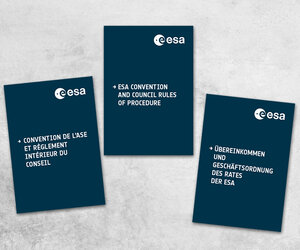ESA SP-1240 Mars Express - the Scientific Payload
Mars, our most Earth-like planetary neighbour, beckons. Its pristine and diverse surface, equal in area to Earth’s land surface, displays a long and fascinating history, punctuated by impact events, volcanism, tectonics, and aeolian, fluvial and glacial erosion. A century ago, astronomers believed they were witnessing the last attempts of a dying martian civilisation to cope with the devastating effects of climate change.
Read online
The notion of an intelligently inhabited Mars was later dispelled, but the expectation that simple life forms could have survived persisted. Today, after sending robotic missions to Mars, our view of the planet retains some striking similarities to those earlier romantic conjectures.
We know from orbiting spacecraft that Mars has undergone dramatic climatic and geologic changes. Water coursing over its surface in the distant past left dramatic evidence in deeply carved channels and fluvial networks. Yet today we find the planet is cold and dry. There is no evidence so far that life exists there now, but primitive life during Mars’ warmer, wetter past is a real possibility. So, mysteries remain: how did our Earth-like neighbour arrive at its present parched, cold and almost airless state? Did life evolve and then die out? Did it leave a fossil record? Last but not least, can the changes experienced by Mars teach us something about the dramatic changes being predicted for our own planet?
These and other questions have spurred scientists and engineers to meet the enormous challenge of sending missions to Mars. A Mars-bound spacecraft must survive journeys of more than 6 months, approach the planet from just the right angle and at the right speed to enter orbit, and then operate successfully to return valuable observations. Some missions have failed, but the successes have more than repaid the effort and risk. Our knowledge about Mars has grown dramatically with every successful visit. Four decades of space-based observations have produced more information and knowledge than earlier astronomers with Earth-bound telescopes could have imagined.




